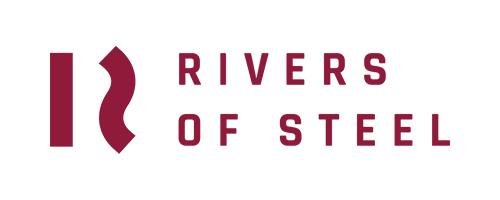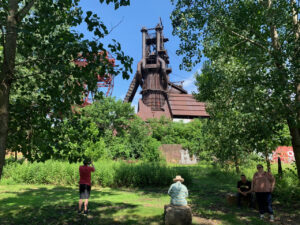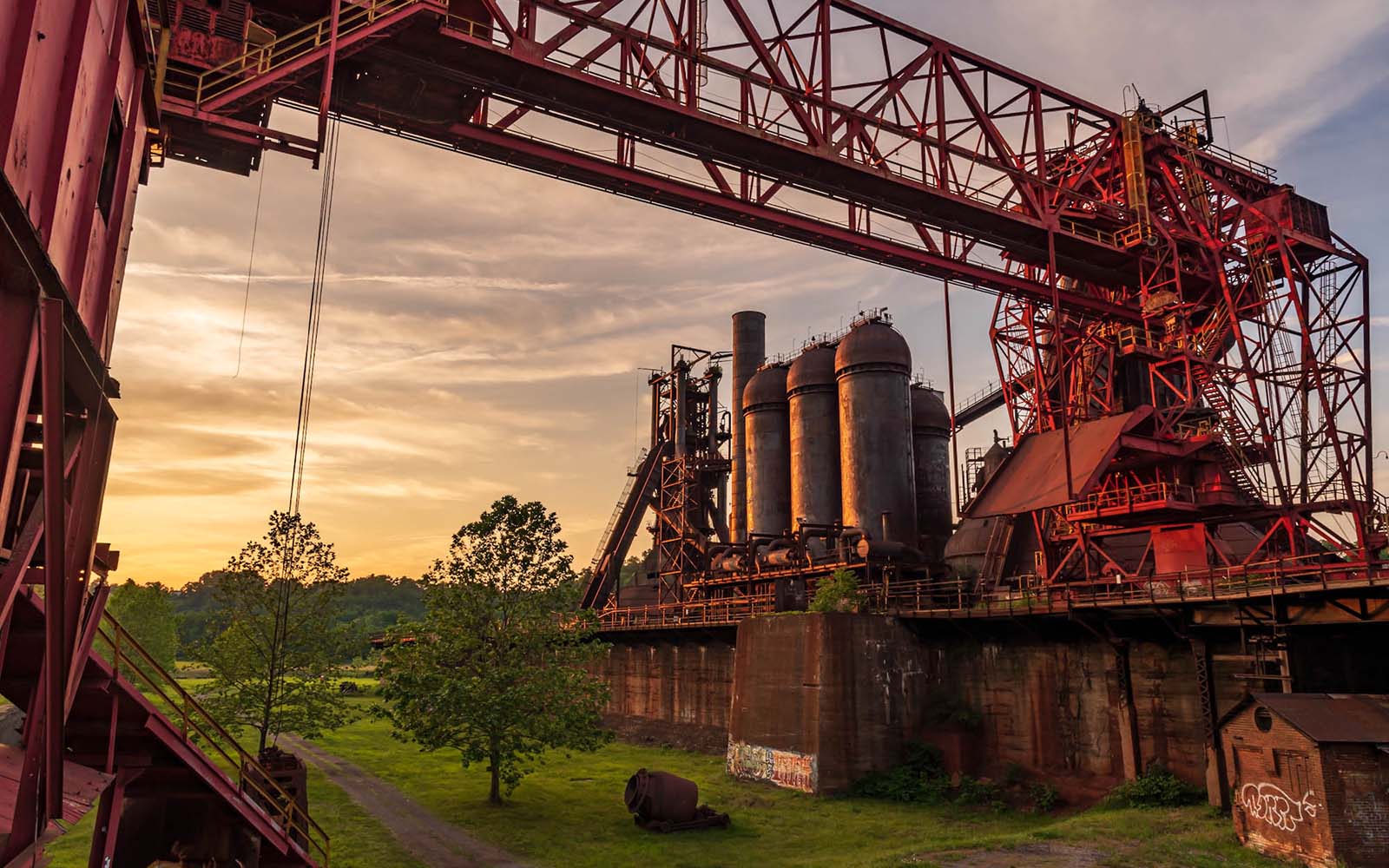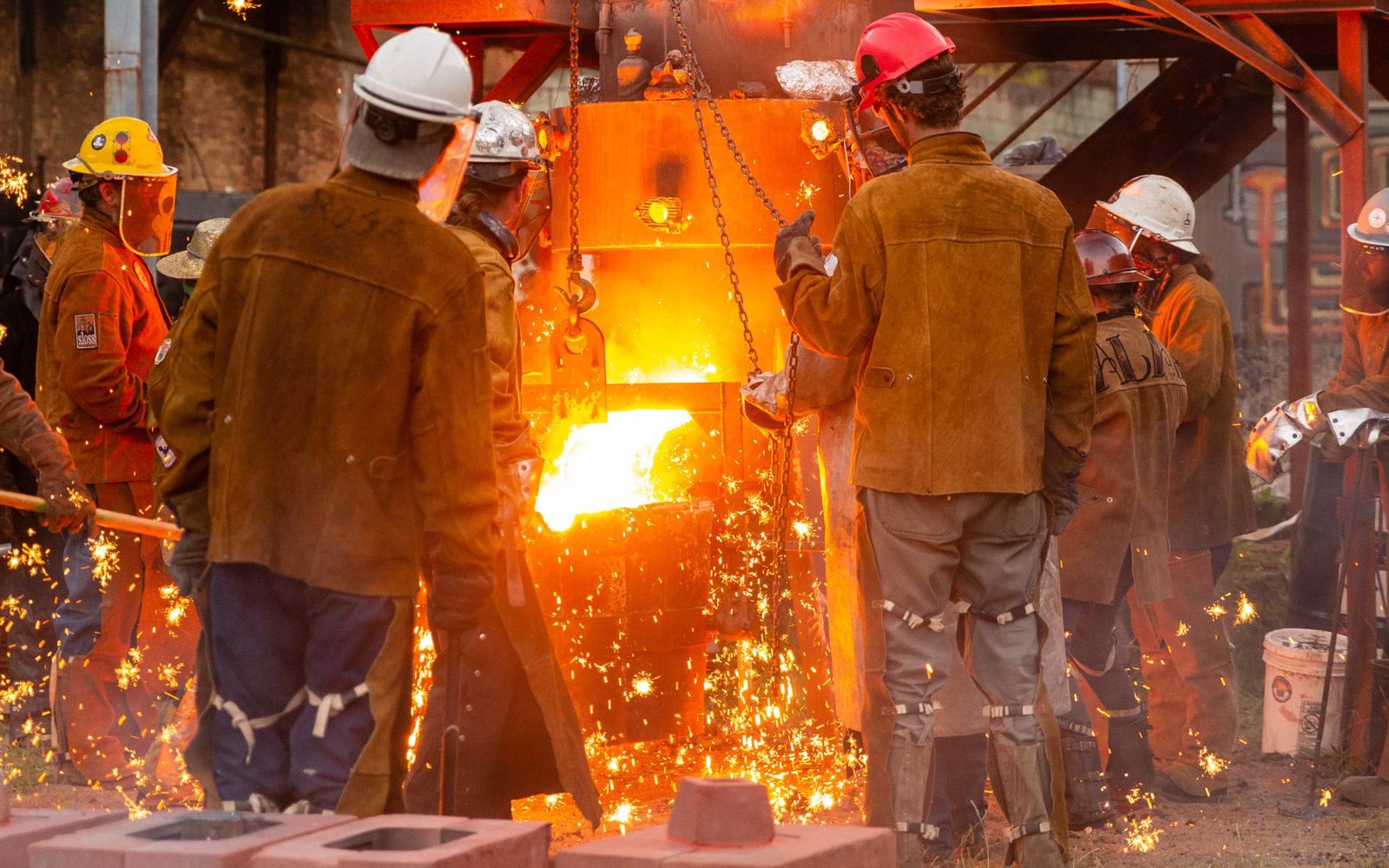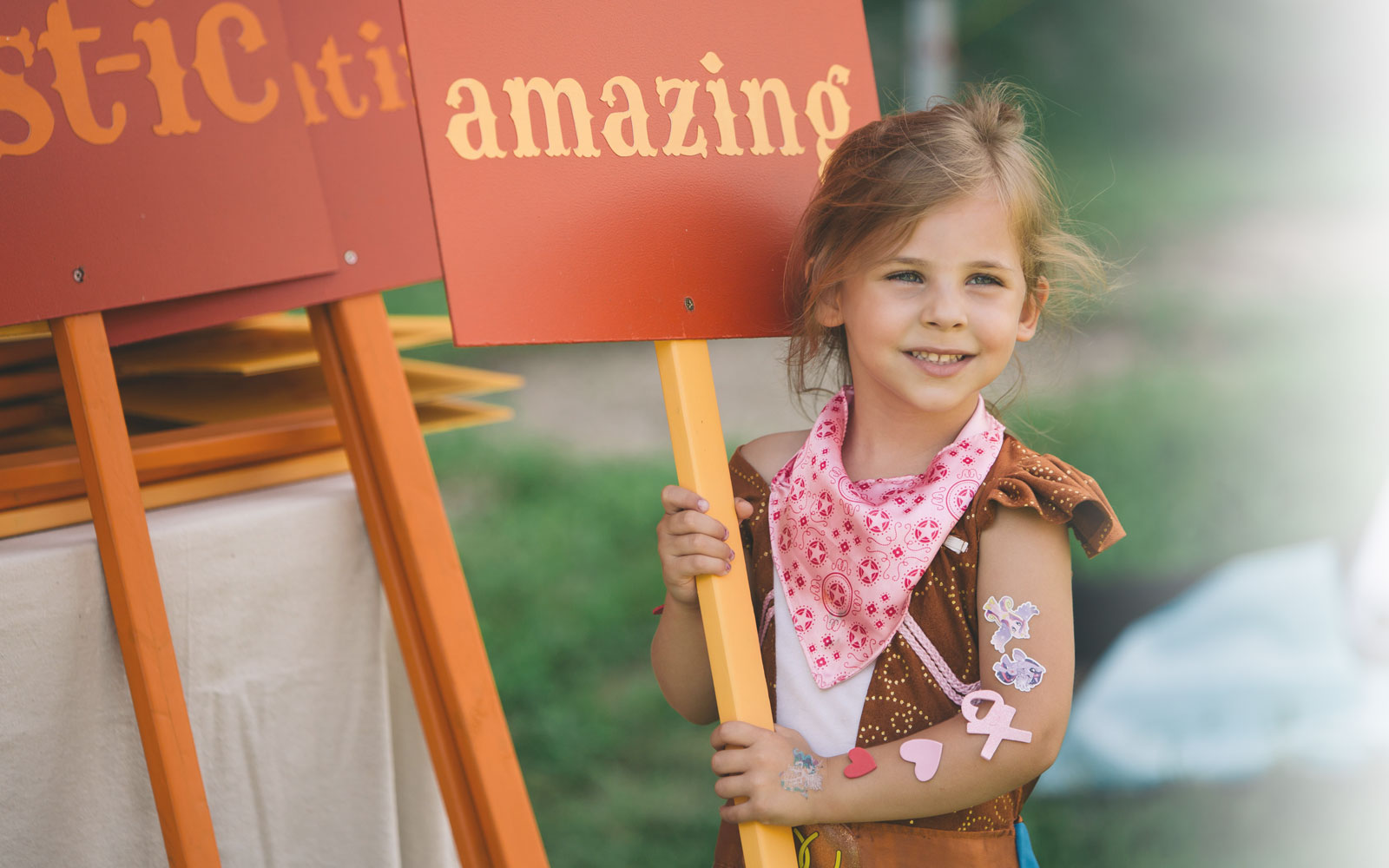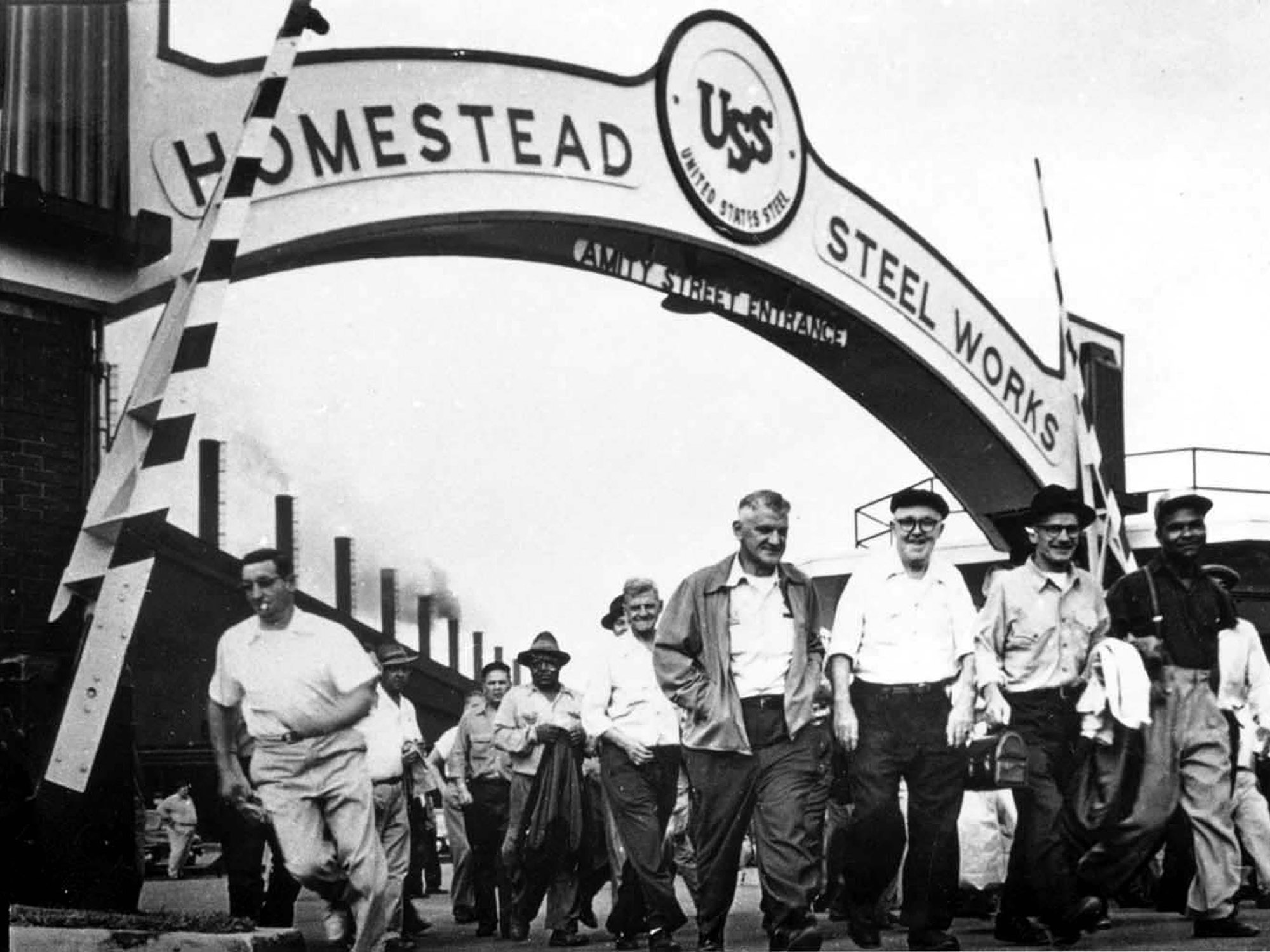Glimpses of the inspirational force that is Mother Nature can be found throughout the Carrie Blast Furnaces historical site, noting the transition from manmade infrastructure to the reclamation of nature and a nod to the cycle of life and death. Many have paid homage to this cycle, most notably being The Carrie Deer created by the Industrial Arts Co-op, made up of artists George Davis, Liz Hammond, Tim Kaulen, John Latell, Joe Small, Tim Yohman, and Bob Ziller. Today, the former Steel industry structure and worksite houses the only non-operative blast furnaces in the region and is now a habitat for wildlife, including red-tailed hawks, ravens, great horned owls, and more. This combination makes for an interesting venue for environmental science classes and history buffs alike.
This past year, Rivers of Steel educators have been bringing students in grades 5-11 to the Carrie Blast Furnaces to explore this eco revolution in a new class, Environmental Science on the Mon. This program features familiar elements from Rivers of Steel’s science classes on The Explorer Riverboat, offering unique alternatives while the Riverboat receives much-needed repairs.
“What excites me about this program is the historical tour of the site, combined with access to conduct hands-on environmental testing in a location that was formerly impacted by the very industry that made this region prosperous and famous. This type of legacy pollution exists throughout Rust Belt cities and is part of the story of iron and steel just as much as the revered stories of Pittsburgh and American steel building the world,” says Suzi Bloom, Director of Education at Rivers of Steel National Heritage Area. “The reality is that the peak of the steel industry happened before most environmental regulations were put in place, a concept that can be difficult for younger students to fathom.“

The AC Powerhouse
The focal point of the hands-on sampling in Environmental Science on the Mon is, of course, the adjacent Monongahela River, which has a profound history of waste contamination from sewage, industry, and acid mine drainage. The Monongahela River watershed is also home to many former slag dumping sites, another contributor to the legacy pollution, so often found in iron and steel towns. People have tracked the effects of industrial contamination for more than a century. In Homestead: The Households of a Mill Town (part of the Pittsburgh Survey, 1907), Margaret Byington notes that the water supply in Homestead comes from the Monongahela. “The water, some of which drains from the mines, has been used over and over for the processes of steel and coke manufacture, and is impregnated with chemicals, especially sulphuric acid.” According to a Homestead resident in 1907, “No respectable microbe would live in it.” Biological records support this claim indicating that most of the upper Monongahela River remained lifeless until well into the 1960s.
The A.C. Powerhouse (i.e., Alternating Current Power House) at The Carrie Blast Furnaces serves as the classroom space for Environmental Science on the Mon, with the building itself being part of the environmental story of the site. Initially built in 1906-1907 to generate electrical power for the U.S. Steel Homestead Works plant and the Carrie Furnaces facility, its construction was part of a company-wide effort for U.S. Steel to centralize electrical power generation among its plants in the Pittsburgh District. The company was a leader in the country in the utilization of blast furnace gas to blow the blast furnaces engines and to power electrical generators. At the height of their production, Carrie Furnaces 6 and 7 produced about 250 million cubic feet of gas per day with the potential to generate large quantities of power, producing between 2,000 and 2,500 tons of hot metal per day per furnace. By 1912, the Carrie Furnaces plant produced nearly 1 million tons of iron annually and was capable of generating 15,200 kilowatts of power for the U.S. Steel Homestead Steel Works.
During Environmental Science on the Mon, students collect data on dissolved oxygen, turbidity, pH, and temperature—all tests indicative of whether the river can support the life typical of a healthy freshwater ecosystem. Students test for nitrates and iron in this hands-on experience, utilizing digital meters and field test kits, and gain experience with sampling equipment. Students explore the concepts of watersheds while referencing topographic maps of the Monongahela River from 1956 and 2019, which show the drastic change and reduction of industry along the riparian zone within the last 65+ years. Today the Monongahela River is still a regional source of drinking water with healthy freshwater ecosystems providing opportunities for recreation, such as fishing and boating.

Iron Garden Tour
Rivers of Steel’s educators often collaborate with teachers to custom tailor the program experience like this summer’s Pre-College program in Computational Biology hosted through Carnegie Mellon University where students collected soil samples at the blast furnace site to later process in the laboratories at Carnegie Mellon. Carnegie Mellon University Professor, Phillip Compeau shares, “We run an immersive full-time program for students from Pittsburgh and across the country to spend four weeks analyzing the microbes in Pittsburgh soil and water environments and determining how these microbial communities change over time. Rivers of Steel has proved an integral partner as we have grown the program from 25 students in 2019 to 100 students in 2025.” Sampling soil from the Carrie Furnace site identifies how industrial activities have influenced the soil’s microbial communities. This site offers our students, many of whom are from outside western Pennsylvania, a truly unique opportunity to learn about a fascinating era of western Pennsylvania history and the iron-making process while also performing scientific research.
Over time Environmental Science on the Mon programs plan to evolve with the addition of science modules including birdwatching and plant studies in the Iron Garden at Carrie Blast Furnaces. Designed in collaboration with landscape architect Rick Darke, Penn State Master Gardeners, Addy Smith-Reiman, and CMU staff sculptor Josh Reiman, the garden features a stunning reveal of Carrie Blast Furnaces through Pennsylvania native plants. This park space once again highlights natures reclamation of the site, iron cast placards are posted up throughout the garden for a self guided experience annotating the ecological biodiversity. Rivers of Steel is proud to host the region’s postindustrial history with the wild garden being a big part of this story. The Iron Garden has become recognized as one of the region’s botanical assets and is part of the Pittsburgh Garden Trail highlighting hidden gems since 2017.
For more information on Rivers of Steel’s student programs contact Suzi Bloom, Director of Education at education@riversofsteel.com.
Rivers of Steel environmental education programs are made possible by the Arconic Foundation, The Alcoa Foundation, and The Grable Foundation.

